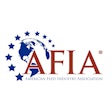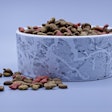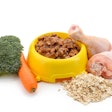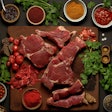The Association of American Feed Control Officials (AAFCO) annual meeting was held in Oklahoma City, Oklahoma, USA, on August 5-7, 2006. Everyone I spoke to especially enjoyed the bull riding event at the local arena on Saturday evening. For some reason, I had a particularly hard time with my cell phone while in the downtown Oklahoma City area. Based on the progress made in some of the committee sessions, I'd say my phone wasn't the only thing having trouble connecting.
Delays and setbacks
Neither the AAFCO Pet Food Committee nor the Model Bill and Regulations Committee had petfood-related items up for membership vote at the general session. Thus, there are no newly enacted regulations for which manufacturers have to plan in the immediate future.
In the committee sessions, the Pet Food Committee decided to drop its work of seven years on drafting regulations on when guarantees are to be declared as minimums or maximums. After at least several unsuccessful attempts to forward recommended amendments, it was concluded that the initiating cause (a state's application of the general animal feed regulations to petfood labels) had already been resolved, hence action was no longer necessary.
Also in the Pet Food Committee session, action was tabled after brief discussion on the American College of Veterinary Nutrition proposal that would require mandatory calorie content statements on all dog and cat food labels. A related item on the agenda, the Pet Food Institute's proposal for amendment of PF10 to address labeling requirements of "weight management" products, was not discussed at all.
The Model Bill and Regulations Committee had anticipated that the AAFCO membership would vote on the new model bill that would have clarified a state's authority over noncommercial feed at the general session, but that item was withdrawn at the last minute. Apparently, even after eight revisions of the draft document, there are still significant concerns, so it's back to the drawing board for the Committee. A proposal to amend the definition of "feed ingredient" in the Model Bill for commercial feed to be consistent with the noncommercial feed bill was put aside pending resolution of the noncommercial feed bill matter.
Safety regulations
It was expected by some that the Feed Manufacturing Committee's Animal Feed Safety Regulations would be moving forward, too, but that was not the case. If eventually passed, these new model rules would impose additional processing, sanitation, distribution and record-keeping requirements upon animal feed (including petfood) manufacturers. For now, there are still significant concerns about language (e.g., "contamination" vs. "adulteration") and other matters, so the Committee is going to the Board of Directors for guidance.
Finally, a working group within the Feed Labeling Committee had developed a plan that would pave the way for carbohydrate-related claims. However, after some discussion, the working group chair withdrew the plan from consideration by the Committee to work on it further. Unfortunately, the chair is leaving his feed control official position, so it's unknown at this time who will take over the working group.
Some progress
Notwithstanding the above, I don't want to give the impression that there was no progress made in Oklahoma City. With publication of the National Research Council's Nutrient Requirements of Dogs and Cats a couple of months ago, the Pet Food Committee is moving forward with plans to convene expert panels to review and update as necessary the AAFCO Dog and Cat Food Nutrient Profiles and feeding trial protocols.
A new policy statement to clarify when guarantees are required (and more importantly, when they are not required) to support claims on petfood labels has been sent to the Board of Directors, as were editorial changes to the petfood nutritional adequacy affidavits. With luck, the corrected affidavits will appear in the 2007 AAFCO Official Publication.
An amendment of the definition for taurine to allow for use in dog foods and a change to the animal liver definition to allow poultry (as well as mammalian sources) were voted and passed by the AAFCO membership at the general session. At the Ingredient Definitions Committee session, an amendment of the definition for selenium yeast to allow for use in dog foods and a new tentative definition for hydrolyzed yeast were accepted by the Committee and are moving forward for Board and, hopefully, membership consideration.
Although the Animal Feed Safety Regulations did not move forward, the Animal Feed Safety Program document that describes basic goals and objectives has left the Feed Manufacturing Committee for Board consideration.














